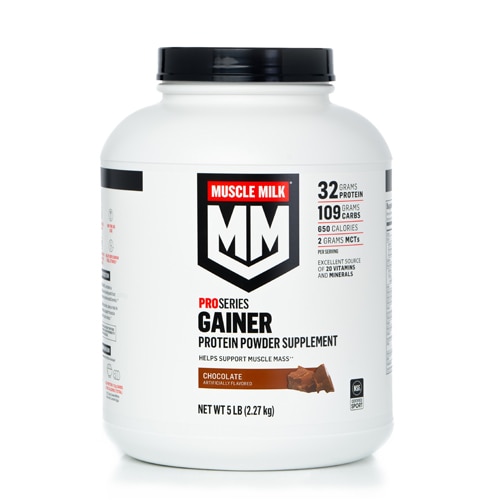You work out for a lot of reasons, and building muscle is probably one of them. If you’re going at it without the help of a professional, chances are you may not be happy with your results. There are a lot of little details to take into account, including your weekly routine, amount of rest and more.
That doesn’t mean you can’t get where you want to be. Use these tips to take the right steps toward a stronger body.
1. Not using a progressive program
Many people see initial gains but then plateau. That’s because they’re not progressing; instead, the body is getting used to lifting the same weight, the same way, at every workout.
If you want to build strength, the key is a progressive program. This means, you slowly increasing your weight and varying your reps and sets to keep your muscles growing and guessing. A basic, progressive 4-week cycle may look like this:
- Week 1: 15 reps, lowest amount of weight you can lift for 15 reps
- Week 2: 11 reps, add 5lbs. more weight than the week before
- Week 3: 8 reps, add 5 lbs. more weight than the week before
- Week 4: 5 reps, your heaviest week of the cycle; up to a weigh that maxes you out
Each week, you repeat the same exercises, for a total of three months. This allows you to continually overload the same muscle groups and gives your body enough time to get stronger. After three months, you’ll see that progress you’ve been waiting for. While this may feel like a long time, Chris Gregory, Senior Trainer for Ultimate Performance, explains why it’s critical:
“Muscle growth can be a painstakingly slow process at times and is never linear, driving the need for consistency week in, week out ever more important. Training and diet ADD is more prominent now than ever. And this may be the downfall for many trainees with muscle building ambitions. An inability to stick to ONE training and diet plan means the body never experiences the most important factor in muscle growth: progression.”
One way to maintain motivation is to track your workouts with an app. Not only does this make it easier to simply duplicate workouts each week, but it may also help you stay motivated. When you see that you started chest press at just 45 lbs., but now you’re lifting 65 lbs., you’ll feel great.
2. Doing too much cardio
Weight training can increase muscle mass and reduce body fat. Cardio also helps with the latter and promotes heart and lung function, enhances circulation, strengthens bone density and sustains weight management. While there are a variety of studies that say cardio does and doesn’t counteract your weight training, there’s no single verdict. As such, when choosing your workout, focus solely on what you want to improve most.
If you want to build muscle, strength training should be your main focus. If you’re lifting with a progressive program, you will see progress, whether you’re doing cardio or not. Spending energy pushing through a long run on the treadmill or finishing a HIIT workout isn’t necessary—save that energy for your strength workout, where you’ll need it most.
3. Not using training splits
The phrase “training split” refers to how you target each specific muscle group throughout the course of a week. Not only does this ensure that you’re reaching every major muscle group, but that you’re doing so when each muscle group is recovered. For example, if you have 4 to 5 days to dedicate to working out, your splits may look like this:
- Monday: Legs, chest (large muscle groups)
- Tuesday: Bis, tris
- Wednesday: Chest, shoulders
- Thursday: abs, cardio
If you can only lift weights twice each week, your splits will be simpler: upper body and lower body.
Whatever your split, the goal is to make enough time for rest. Resting your muscles is just as important as working them when you want to build strength. Recovery is when they grow, and if they don’t have that recovery time, then you’re stuck at square one.
4. Not getting enough variety
The body is smart, so performing the same exercise at the same weight, over and over, becomes easy for your muscles. The more repetitive a workout becomes, the less challenged the body is to push itself to the threshold of visible change.
Not to mention, doing the same workout over and over is boring. When your workout becomes boring, you check out, and all progress is lost. In fact, researchers at the University of Florida have pinpointed a direct correlation between variety and adherence. In this study, the first group of test subjects exercised for eight weeks, changing their workouts consistently. The second group performed the same workouts for eight weeks, and the third group followed no specific guidelines.
Participants in the first group exhibited 20 percent more enjoyment than group two members and 45 percent more than group three members. They were also 15 percent more likely to maintain an ongoing fitness program than group two and 63 percent more likely than group three.
There are two ways to integrate variety into and refresh your workout routine. Try new exercises each week, which is fun and gives your body something new. Or, simply move into a progressive plan. You’ll perform similar exercises each week, but increase the weight. This keeps your body guessing, which makes it just as effective.
5. Lifting too fast
When you want to build muscle, it’s more beneficial to train with a slower, controlled and deliberate cadence. Not only is this critical to maintaining proper form as your weight load increases, but slower movements allow you to focus on the muscle, stimulating growth and increasing the tension your muscles experience, according to The Journal of Physiology.
Lifting in this way also allows you to reach muscle fatigue faster, which is when you start to see strength gains. That’s why many fitness professionals suggest lifting to fatigue, when you feel like you can’t possibly do one more rep, or making sure your weight choice gets you to this point by the end of the set. Lifting too light won’t help you get there, and you won’t see improvements in muscle.
Start Building Muscle Now
It’s not easy to build muscle, but it’s not impossible either. Start with a progressive program—and stick with it. Don’t forget to slow down as you’re lifting, reduce long, strenuous cardio, and bring in variety when you can. But remember: you won’t see results over night. Complete your program and have patience; results will come if you just stick with it.





